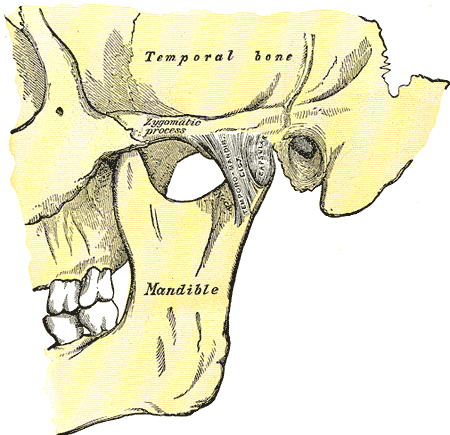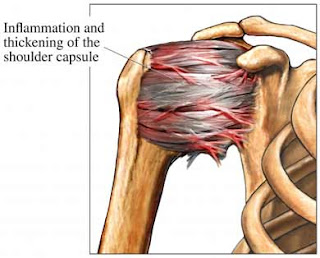Nutrition
When we exercise we burn energy that is formed from Carbohydrates, Lipids and Protein. ATP, “Adenosine triphosphate” plays a big part in the transportation of these compounds. What is ATP you may ask? ATP is a multifunctional nucleoside used in cells for the transportation of energy
Carbohydrates come in various forms but the ones we know the best are complex carbs (slow release), and simple carbs (fast release). As an athlete or a sports person it is very important that you body receives ample quality nutrition pre and post event in order that a) performance is at its optimum. b) Performance is sustained. c) that the right kind of nutrition is taken for the right kind of sport and exertion. d) Recovery is aided by replacing depleted glycogen within the cells, ideally within a 20 minute period after training. It is said that if this window is missed muscles can become catabolic (catabolic, or catabolism is the break-down of energy particles into smaller usable units, this is done due to the body being depleted of glycogen so it continues to break down whatever it can in order to keep functioning. The opposite of catabolic is anabolic, catabolic means to break down, anabolic means to build. As far as exercise is concerned we can link both catabolism and anabolism to aerobic and anaerobic, we can then integrate these to “Slow Twitch” to “Fast Twitch” muscle fibres.

What are they?
Anaerobic activity uses fast twitch muscle fibres for short burst of energy whilst aerobic uses slow twitch fibres that contract more slowly allowing the body to continue longer in its chosen sport. After energy is depleted in the form of sugars its next port of call will be protein, followed by its fat stores.
The body is very clever by using the most expendable energy first, simple carbs will of-course get burnt first followed by complex carbs and proteins, and then fats that are stored within cutaneous layers surrounding our organs and muscles throughout the body. A good example of fats being used as energy would be with the cross channel swimmer. Long distance swimmers have a good layer of fat on them in order to help them swim for longer as well as for insulation purposes. Hormones of-course play a big part in this process as does the endocrine system. The body burns adipose (fat) last due to its protective quality’s within our body’s defence system.
We need a certain amount of fat in order to maintain good immune response as well as brain power. Fat is a great source of energy for sport but it is a far more difficult compound to access. Within one pound of fat there is nearly 3500 calories. Whereas fats are mainly used in long distance sports; proteins that are formed from Amino Acids that come from red meats from animals with vertebrae create what is known as Phosphagen.
Phosphagen is formed from creatine, creatine is a form of phosphagen that allows for fast rapid use of explosive energy rather than relying on ATP. Creatine is produced by the body naturally but it can also be taken as a supplement. It is produced in the liver from Amino Acids. It is transported in the blood for use by muscles; nearly 95% of the body’s creatine is found in the muscular skeletal system. It is not an essential nutrient but it is of-course extremely useful when it comes to performance related sports where fast explosive movement is required but not essential needed to be sustained.
Nutrition plays a huge part in performance, a sports person that has a very good balanced diet of Carbohydrates, Protein and Lipids will prove to be a far greater threat than that of a vegetarian competitor. This is actually fact! As the body only produces a certain amount of creatine which as said before; comes from animals with vertebrae’s and not plants, the carnivore will have the edge over his or hers herbivore competitor, that’s unless they have supplemented their diet with “Off the shelf” products.
Hydration
Water is the most important nutrient for life and has many important functions including regulating temperature, lubricating joints and transporting nutrients and waste throughout the body. Staying hydrated is particularly important during exercise. Adequate fluid intake is essential to comfort, performance and safety. The longer and more intensely you exercise, the more important it is to drink the right kind of fluids. Being dehydrated radically decreases performance. Studies have shown that athletes who lose as little as two percent of their body weight through sweating have a drop in blood volume which causes the heart to work harder to circulate blood. A drop in blood volume may also lead to muscle cramps, dizziness, fatigue and heat illness including: Heat Exhaustion and Heat Stroke which is a very common causes of Dehydration in Athletes. Poor hydration can result in fatigue and electrolyte imbalances. Electrolytes assist in muscular contraction, cardiovascular function and neurological function.
Inadequate fluid intake, excessive sweating, failure to replace fluid losses during and after exercising in dry or hot weather, drinking only when thirsty, all these factors can have a very detrimental effect on your performance. As it’s very hard to measure the variability in sweat rates it is extremely hard for people to find the Holy Grail when it comes to staying appropriately hydrated when participating in sporting events. Finding the right amount of fluid to drink depends upon a variety of individual factors including the length and intensity of exercise and other individual differences. There are, however, two simple methods of estimating adequate hydration:
Monitoring urine volume output and colour. A large amount of light coloured, diluted urine probably means you are hydrated; dark coloured, concentrated urine probably means you are dehydrated. Weighing yourself before and after exercise. Any weight lost is likely from fluid, so try to drink enough to replenish those losses. Any weight gain could mean you are drinking more than you need.
Lactic Acid & Metabolic Waste
When we exercise and burn calories from varied energy sources we create what is known as “Metabolic Waste”. Metabolic waste is a by-product/reaction resulting from muscle contraction. When nutrients are converted into energy for contraction, like a locomotive train uses coal to chug along it also creates a by-product (smoke and fumes).
As this metabolic activity intensifies so does the production of these waste products. When a certain level of waste is accumulated within the muscle they then start to irritate the nerves due to a change in our body’s PH “Potential Hydrogen”. Levels are from 1-14, with 7 being average and at the level where neural interference is at a minimum, when you go below 7 things become more acidic, and as we know acidic things cause varied problems and discomfort. Being appropriately hydrated helps to flush out metabolic waste and lactic acid.
Massage
Additionally; when lactic acid and metabolic waste is released into our body’s gases, fluids, and various ducts, sometimes this causes blockages. The blockages then go on to create neural disturbances within our bodies down to cellular level and at sarcoplasmic level. Sarcomere’s are within our body’s muscles, you may remember the sliding filament theory taught in many A&P courses in basic massage as well as sports massage etc. when these filaments become blocked they can cease to slide over each other as they should, they become bunched. When this process takes places toxins can be produced as well as other acidic matter within the muscle, this then can create tightened and shortened muscles that do not function properly. The muscle tissue can become hypertonic, a by-product of this process can lead to what Janet Travel “Informed Touch” calls a Trigger Point, what is a trigger point you may ask? A trigger point is a hyper irritable locus that can be found in a band of muscle, when palpated it can cause localised pain and referred pain. When we apply our varied repertoire of massage techniques to the body we look to remove or unwind these restrictions in fascia and muscle’s by trying to locate the root cause and alleviate the troubled area or areas by means of stretching, compressing, and desensitising irritable areas within the body’s soft tissues. By releasing tight muscles we allow the sliding filaments within the muscle to continue contracting, making for better function of the body and its locomotive system.
When we exercise metabolic waste is stored within the muscular skeletal system, using massage we can help to flush out toxins into our body’s natural drainage ducts such as the Lymphatic System. Massage is also excellent for stimulating the parasympathetic nervous system brining about relaxation and equilibrium. When we train our body creates free radicals and raises cortisol levels, this has an opposing and negative effect on the positive side effects of exercise.
References: Janet travel “Informed Touch”.
Studies and information I have learnt over the years via reading ACSM “American College of Sports Medicine” books for PT work, and YMCA Y-FIT Level 3 Trainer publications/ handouts.







+WEB+SITE+FRONT+COVER+ON+BLACK+BLUE+WHITE+DARK+BLUE+MASTER+JPEG.jpg)





















